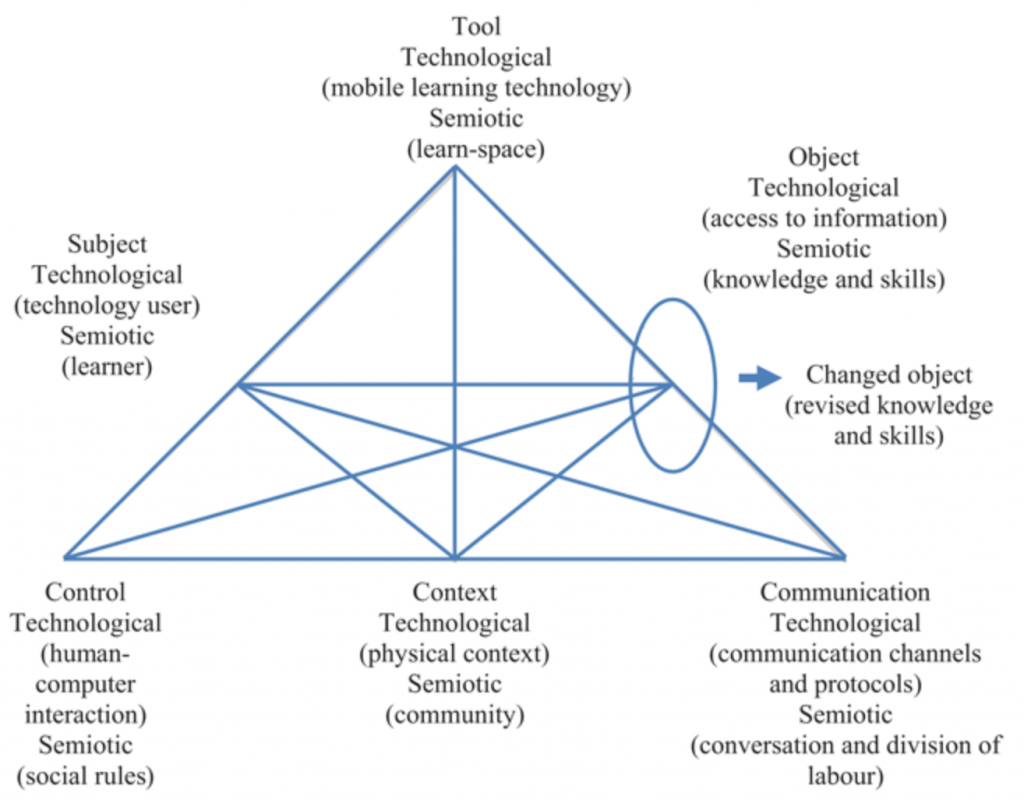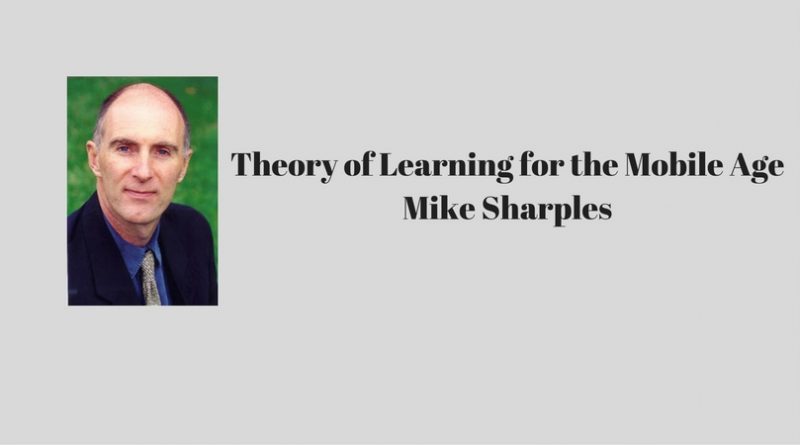Theory of Learning for the Mobile Age
“Children are developing new skills and literacies enabled by mobile devices, such as SMS texting, moblogging (write diaries and weblogs on mobile devices) and mobile video creator”. (SHARPLES, TAYLOR ; VAVOULA, 2010, p.1).
The Theory of Learning for the Mobile Age was developed by Mike Sharples, Josie Taylor (from the Open University) and Giasemi Vavoula (from Leicester University). The author focuses on the communicative interaction between learner and technology, exploring the dynamic process that exists in the system.
The first and central aspect of theory is the process of Conversation. The authors, based on the work of Gordon Pask, consider that conversation is the fundamental key on the process of learning. Pask (1976) explained conversation as the need to externalise understanding. Mike Sharples and Diana Laurillard introduced the element technology on the Pask’s Conversation theory, where the conversational framework shows a conversation between learner and learner, learner and teacher or/and learner and technology.
The second aspect is context as learning. Activities are developing in context as well as learning can create context through continual interaction.
Now it is necessary to understand how the authors conceive Learning and Mobile Learning. Learning is characterised “as a process of coming to know through conversation and exploration across continually re-constructed contexts”. (p. 4) Mobile learning “embraced both learning with portable technology, and also learning in a era characterised by mobility of people and knowledge”. (p. 4).
Sharples, Taylor and Vavoula (2007) describe the insertion of computer and communications technology following the research of Engeströn. The authors “analyse learning as a cultural-historical activity system, mediated by tools that both constrain and support the learners in their goals of transforming their knowledge skills.”(p. 5)
The model describes a system of activity amongst subject (learner), focus of analysis, and object (material or problem at which the activity is directed). These are mediated by artefacts, including tools and signs. The authors adapted the Engeströn Framework and introduced the layer Technology and Semiotic to show a dialectical relationship between both, and renamed the cultural factors as Control, Context and Communication. The semiotic layer describes a semiotic system in which the learner’s object-oriented actions are mediated by cultural tools and signs. The technological layer describes an engagement with technology to communicate and to mediate agreements between learners.

Source: http://jime.open.ac.uk/articles/10.5334/jime.ap/print/
In relation to Control, Context and Communication, it is necessary to explore some conceptions. The Control could rest with the teacher, distributed among the learners or between learners and technology. This possibility enables the learners to access materials when convenient and control the pace and style of interaction. The context is an important construction that can be explored from technological and semiotic perspectives. Regarding communication, the technological system provides different forms of communication for learners that adapt their communication and learning actives.
References:
Sharples, M., Taylor, J., & Vavoula, G. (2007) A Theory of Learning for the Mobile Age. In R. Andrews and C. Haythornthwaite (eds.) The Sage Handbook of Elearning Research. London: Sage, pp. 221-47.
Sharples, M., Taylor, J. & Vavoula, G. (2010) A Theory of Learning for the Mobile Age. In B. Bachmair (ed.) Medienbildung in neuen Kulturräumen. Stuttgart, Kohlhammer Verlag, pp. 87-99.
More information:
